Manufacturing in 2025 stands at a pivotal crossroads.
After years of volatility, the sector faces renewed uncertainty. Output growth has slowed, trade policies are shifting, and labor markets remain tight. At the same time, manufacturers are accelerating investment in automation, AI, and smart manufacturing
According to the Federal Reserve’s Industrial Production and Capacity Utilization report, U.S. manufacturing output rose 0.2% in August and was 0.9% above its year-earlier level, with capacity utilization at 76.8%, below its long-run average. The Bureau of Labor Statistics (BLS) Current Employment Statistics data show manufacturing employment down 78,000 jobs year-over-year as of August 2025.
Despite modest declines in headcount, manufacturers continue to invest in smart technologies. The 2025 Smart Manufacturing & Operations Survey (Deloitte) found that 29% of manufacturers are already using AI/ML at the facility or network level, while another 38% are piloting generative AI solutions—signaling that digital transformation is shifting from exploration to execution.
POSITIVE MOMENTUM IN FOOD & BEVERAGE MANUFACTURING
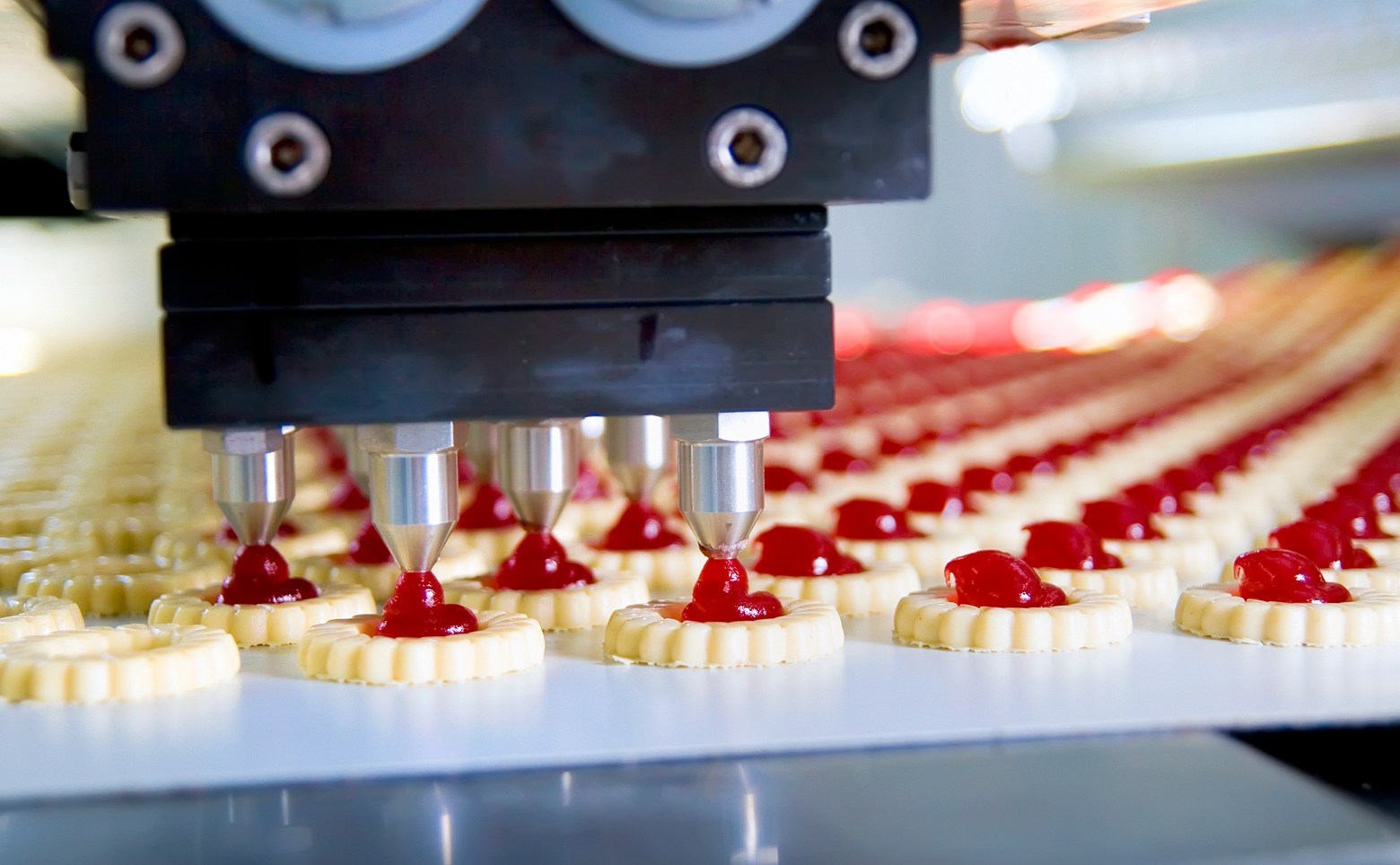
Despite broader manufacturing headwinds, the food & beverage sector continues to outperform. The Federal Reserve Bank of St. Louis reports that food manufacturing drove 19% of all new manufacturing establishments and accounted for 49% of the rise in manufacturing employment over the past decade.
This steady expansion has made food and beverage manufacturing one of the most reliable engines of industrial growth. It is driven by strong consumer demand, continued domestic investment, and innovation in automation and packaging.
MARKET OUTLOOK & KEY TRENDS
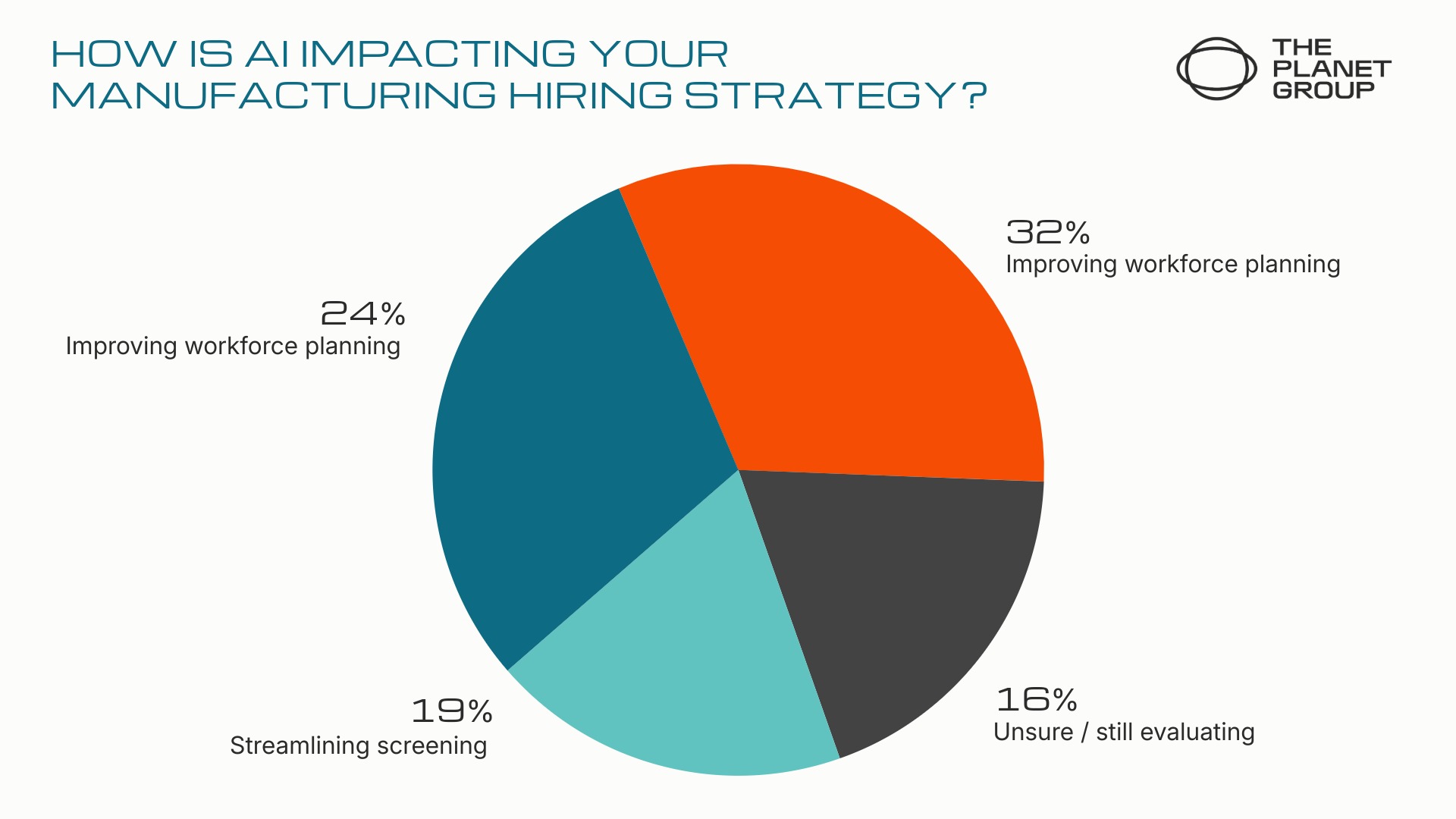
SMART MANUFACTURING & AI INTEGRATION
Automation and industrial AI are redefining how products are designed, built, and delivered.
The Grand View Research U.S. Smart Manufacturing Market Report values the domestic market at $74.5 billion in 2024 and forecasts a 13.1% compound annual growth rate through 2030, driven by digital twin adoption, predictive analytics, and AI-based process optimization. The Georgia Tech Manufacturing Institute supports this transition with applied research in robotics, data-driven process modeling, and advanced automation for industrial systems.
The World Economic Forum’s Future of Jobs Report (2025) projects that AI and automation could shift 9% of manufacturing roles globally by 2030, creating new positions in robotics maintenance, data analysis, and industrial systems oversight.
Top transformative technologies shaping manufacturing in 2025:
- Industrial robotics and cyber-physical systems (CPS)
- Predictive maintenance powered by AI and digital twins
- Data-driven energy management and sustainability optimization
- Advanced materials, additive manufacturing, and flexible automation

OUTPUT, POLICY & TRADE PRESSURES
The overall picture remains mixed. Orders dipped mid-summer before rebounding in August, with Census Bureau data on Factory Orders showing new orders up 2.9% month-over-month. Inventories continue to climb as backlogs persist.
Trade policy remains a key swing factor. Reporting from Reuters highlights tariff volatility across packaging metals, aluminum, and food commodities such as orange juice and cocoa—each adding cost pressure for U.S. producers.
In autos and EV manufacturing, slower demand prompted companies like GM to delay factory expansions. Aerospace, meanwhile, continues a cautious recovery as production stabilizes.
Even with these headwinds, AI and automation investments continue to bolster productivity and mitigate cost pressures across industrial supply chains.
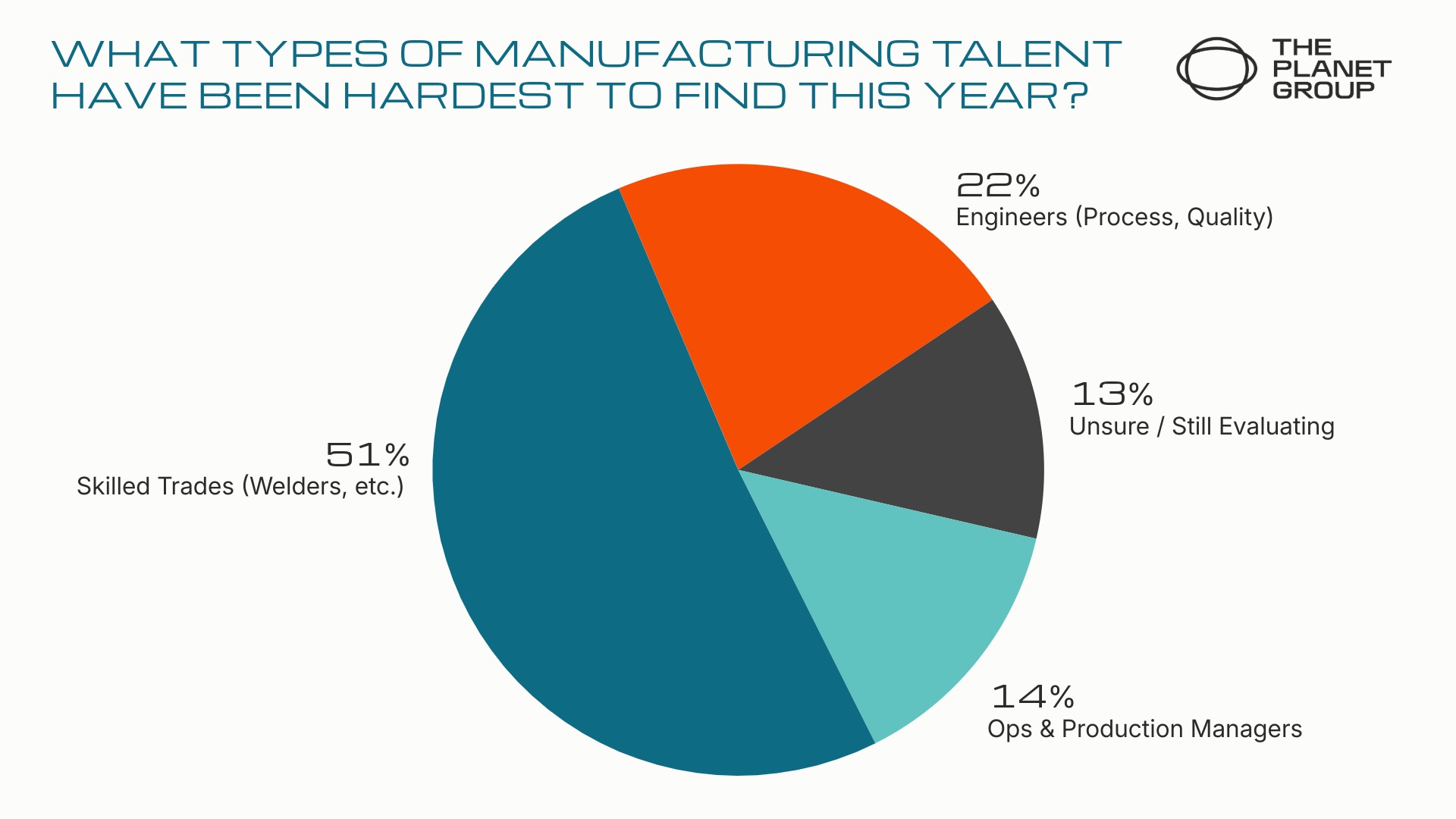
EMPLOYMENT & WORKFORCE TRENDS
Employment Landscape
The sector continues to show strong hiring demand: the BLS Job Openings and Labor Turnover Survey (JOLTS) reported 369,000 open manufacturing positions in April, signaling persistent gaps in skilled labor.
Food processing remains a consistent bright spot within U.S. manufacturing. The St. Louis Fed’s “Sluggish Renaissance” analysis highlights that over the past decade, food & beverage production was the only significant subindustry to consistently expand both in establishment count and job creation. In fact, food manufacturing contributed nearly half of all net new manufacturing jobs—despite declines in many other sectors. This persistent growth has helped anchor the industrial base, allowing food producers to invest in automation, supply-chain resilience, and capacity expansion even during broader manufacturing downturns.

SKILLS & HIRING SHIFTS
The Manufacturing Institute’s Employment Outlook projects that up to 1.9 million manufacturing roles could remain unfilled by 2033, out of an estimated 3.8 million openings. Employers increasingly prioritize hybrid technical skill sets—combining mechanical aptitude with digital literacy—as smart factory adoption accelerates.
Most In-Demand Roles in 2025
- Maintenance (Managers, Supervisors, Techs, Planners)
- Production Supervisors
- FSQA / Quality Assurance
- Engineers (Process/Plant/Project)
- Food Scientists / R&D
Top Locations for Manufacturing Roles Filled by The Planet Group
- Illinois
- Wisconsin
- Iowa
- California
- Pennsylvania
Contract vs. Direct Hire

Salaries
Salaries for manufacturing roles filled by The Planet Group have continued to climb year-over-year. The median salary increased by 5%, rising from $100,000 in 2024 to $105,000 in 2025, while the average salary grew by roughly 3.2%, from $109,725 to $113,222. This steady upward trend underscores the strong demand for skilled manufacturing professionals and the industry’s continued investment in experienced talent.
RETENTION & STAFFING DYNAMICS
Retention remains a critical challenge across the manufacturing sector. According to SHRM’s “Industry: Manufacturing” benchmarking report, annual turnover rates vary by firm size and region, but manufacturers often face turnover pressures in line with broader industry averages.
In addition, SHRM’s broader HR research suggests companies need to plan for year-over-year turnover rates 50–75% higher than historical baselines in tight labor markets.
To respond, manufacturers are increasingly investing in internal development, mentorship, and flexible work structures. These strategies are designed to stabilize retention, especially in front-line and technical roles vulnerable to poaching.
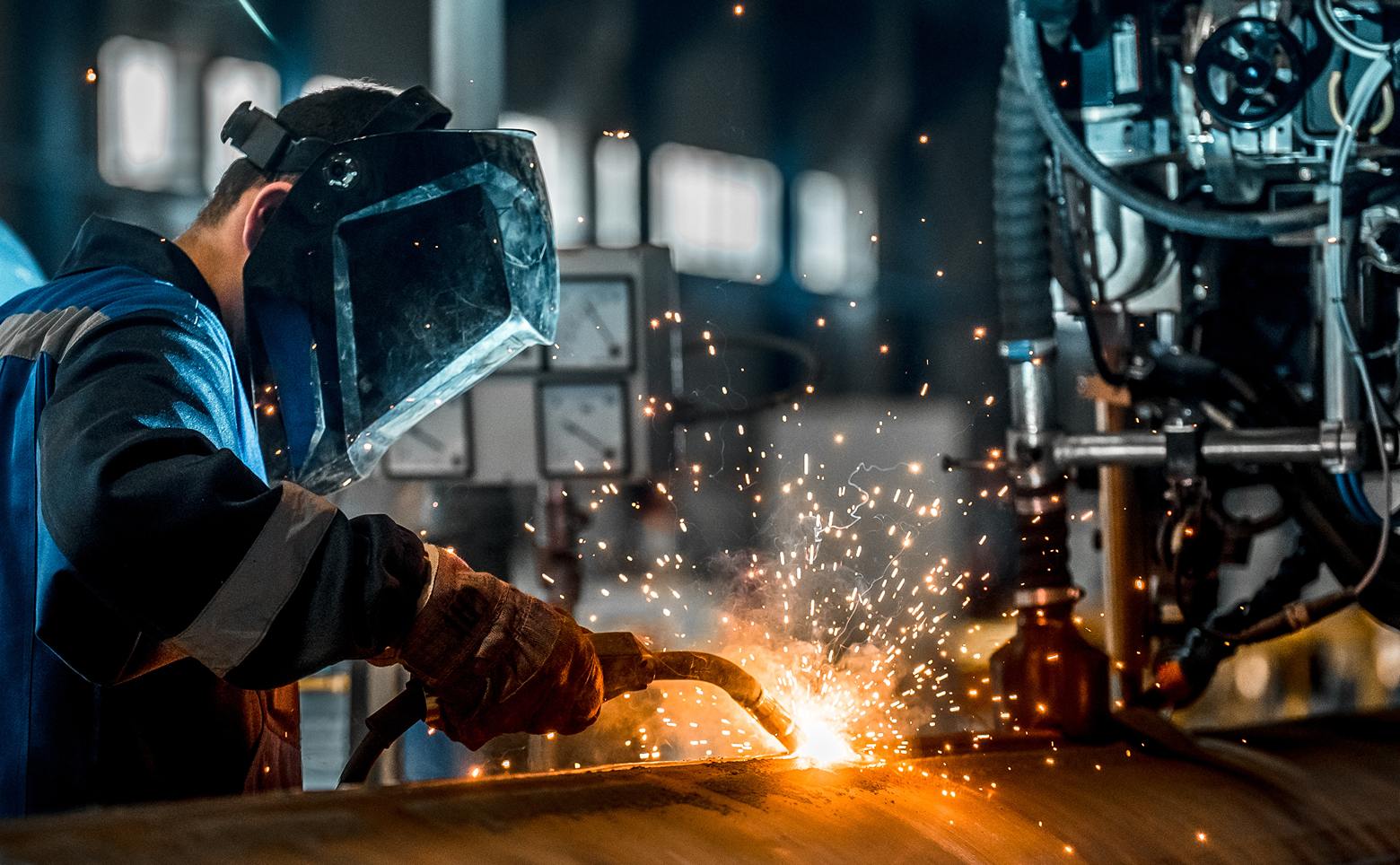
Moreover, contingent staffing remains an important tactic to manage capacity surges without overextending full-time headcount. According to IBISWorld’s Office & Temp Staffing industry analysis, temporary workforce and back-office support still play a key operational role in industrial and manufacturing environments.
Construction, Capital Investment & Facility Staffing
Manufacturing-related construction remains a major growth engine. According to U.S. Census construction data, spending in manufacturing facilities has nearly tripled since mid-2020 and is up ~37% year-over-year as of early 2024. This surge drives sustained demand for project engineers, construction managers, safety specialists, and skilled trades professionals involved in plant expansion and retrofitting.
SEGMENT SPOTLIGHT: FOOD & BEVERAGE MANUFACTURING
The Federal Reserve’s G.17 release shows nondurable goods output—specifically “food, beverage, and tobacco”—rising 0.2% month-over-month in August.
Employment in food manufacturing remains stable at 1.78 million workers, per the Bureau of Labor Statistics, supported by consistent demand but tempered by high input costs.
The Producer Price Index (PPI) reports final-demand food prices up 3.5% year-over-year, with processed foods rising 1.0% month-over-month.
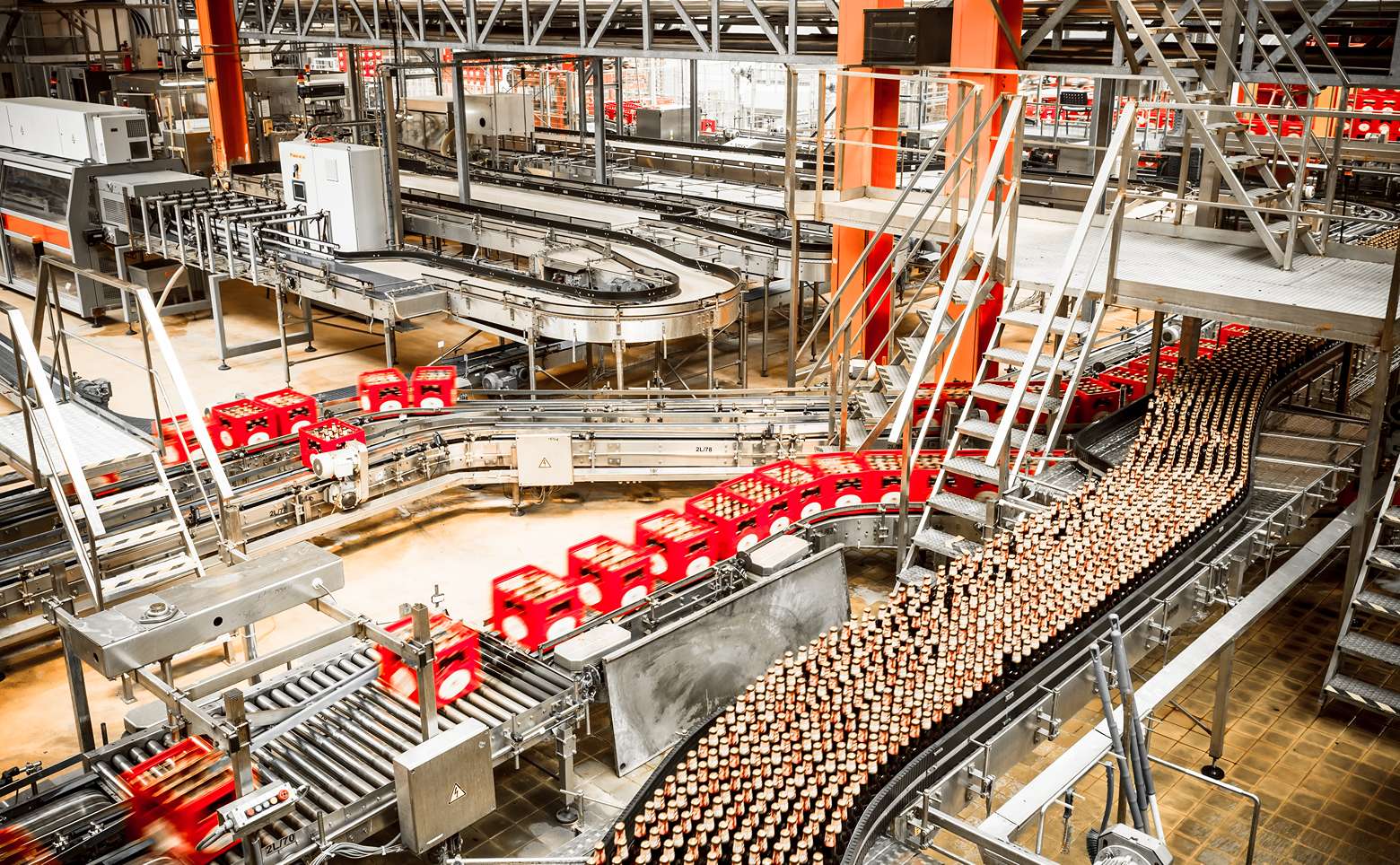
FORECASTS, RISKS & OPPORTUNITIES
The Staffing Industry Analysts (SIA) projects ~2% growth in the industrial staffing segment, tempered by trade uncertainty and rising interest rates. However, demand for digitally fluent manufacturing talent continues to rise.
Opportunities ahead:
- Digital-first operations: Smart factories integrating AI and predictive analytics are reducing downtime and improving overall efficiency. According to Microsoft, manufacturers are moving beyond experimentation to full-scale value realization, using real-time data to predict equipment failures, optimize production, and reduce unplanned downtime while improving energy use and throughput.
- Skills-based hiring: Manufacturers are prioritizing skills over credentials as automation and AI reshape production. The World Economic Forum’s Future of Jobs Report 2025 notes that over 60% of manufacturers now emphasize technical skills in robotics, process optimization, and data analysis to keep pace with smart-factory demands.
- Workforce partnerships: Programs supported by the Manufacturing Extension Partnership (MEP) network are strengthening collaboration between manufacturers, educators, and workforce agencies to accelerate digital skills training and automation readiness nationwide.
LOOKING AHEAD
The future of manufacturing belongs to organizations that adapt fastest.
With output stabilizing, AI adoption accelerating, and major capital projects underway, 2025 marks a turning point. Companies that invest in digital transformation and workforce development today will shape the next industrial decade.
If you’re in need of manufacturing talent or exploring your next opportunity, schedule a call with our experts.
FAQs
1. Which sectors within manufacturing show the most resilience?
Food & beverage manufacturing remains steady due to consumer staples demand, regulatory stability, and investment in traceability and packaging innovation.
2. How are compliance changes influencing staffing needs?
Rules from organizations like the FDA and CalRecycle are increasing demand for compliance, labeling, and traceability specialists.
3. What long-term trend will shape manufacturing hiring through 2030?
The Manufacturing Institute forecasts a sustained talent shortage—driven by digital transformation, an aging workforce, and evolving skill requirements—making reskilling and partnership programs essential for long-term success.

.svg)



